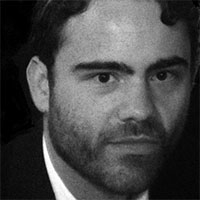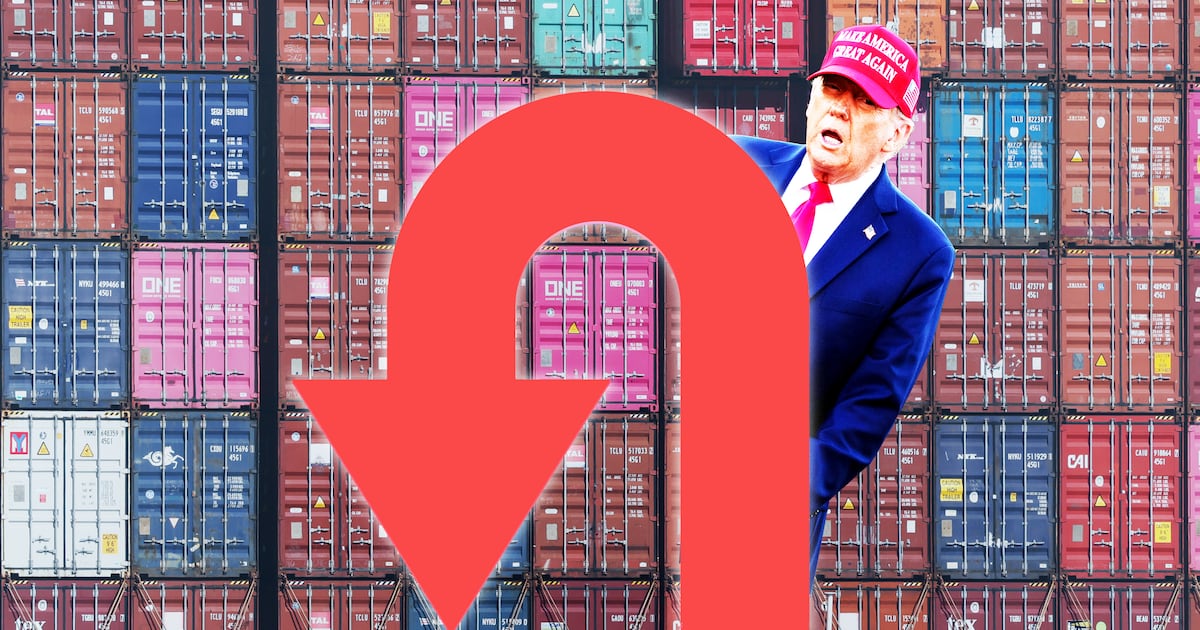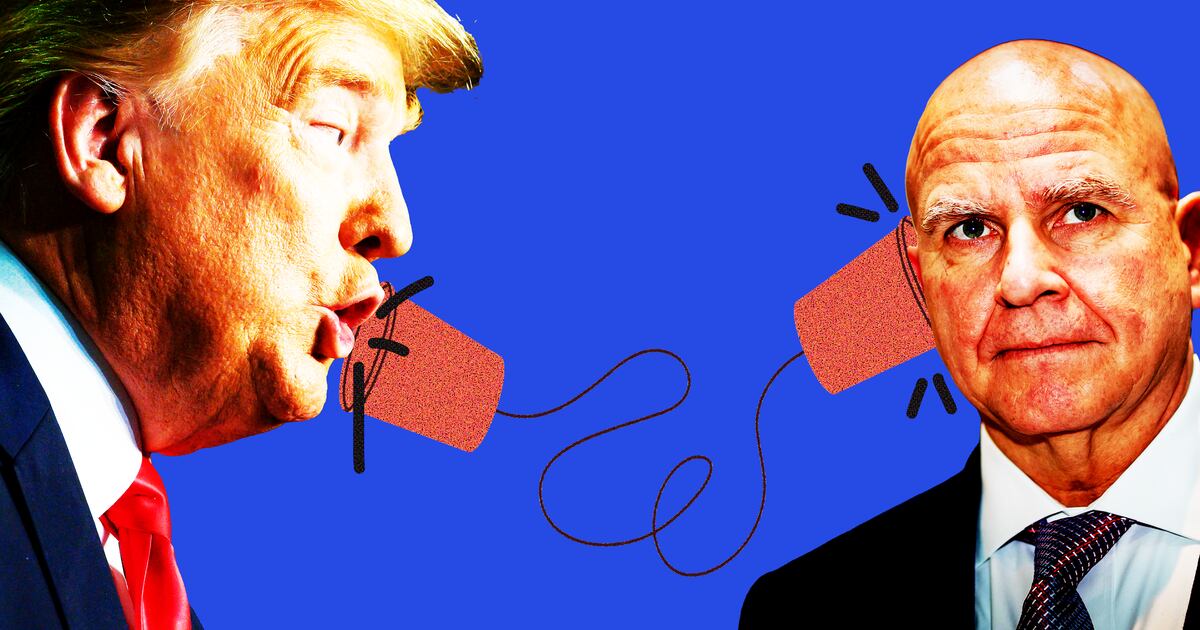GAZA CITY—"Ok, we have five minutes to prepare,” says a one of the eight men wearing balaclavas to hide their faces as they walk into a small olive grove on the outskirts of Gaza City. They’re carrying bulging duffle bags. The scene looks like some perverse trip to the gym. And they are going to perform exercises, but not with weights.
These are Hezbollah’s best friends on the southern border of Israel. Some would say they are Iran’s shock troops. And these are the men who start wars. When they begin to launch missiles and Israel responds, then Hamas and Islamic Jihad respond, too. And the rest is pure carnage.
The buzz of Israeli drones above serves as the soundtrack as these members of the al-Nasser Salah al-Din Brigades unload homemade rockets, two launchers, Kalashnikov rifles, ammunition and walkie-talkies.
The commander uses hand signals to order the others into a line. “Ten minutes,” he barks. They are very precise about time. Over the next hour, they engage in five- or ten-minute training sessions.
There are no launches today. They are running drills: they march in a column, they set rally points, the go down in prone position (which gives a shooter extra stability when taking aim), and they load and unload the rockets. Even to a civilian, it is obvious that the Brigades are well trained.
Then, an old cellphone rings. One of the masked men steps away from the group and has what seems to be a very normal conversation. Probably with his wife or mother. The subject appears to be what time he will get back home. Maybe dinner is waiting. Maybe she doesn’t want it to get cold …
***
As I looked at the man on the phone, at the crouching commandos, and at the rockets that have been a driving force in three wars since 2008, launched against, or some would say in response to, Israel, until the Jewish State responds with massive firepower, followed by days and weeks of extraordinary violence in which thousands of Palestinians die, the scene was at once so martial and so banal that I realized the question I came here to answer—“Who are these men who start wars?”—would have some answers very different than the ones I’d expected.
As I looked at the man on the phone, at the crouching commandos, and at the rockets that have been a driving force in three wars since 2008, launched against, or some would say in response to, Israel, until the Jewish State responds with massive firepower, followed by days and weeks of extraordinary violence in which thousands of Palestinians die, the scene was at once so martial and so banal that I realized the question I came here to answer—“Who are these men who start wars?”—would have some answers very different than the ones I’d expected.
The meeting in the olive grove was arranged by a man called Abu Sayyaf, the commander of the Salah al-Din Brigades in the Gaza Strip. This imposing nom de guerre, which all members of Palestinian armed groups are required to take, translates as “Father of Swords.” But imposing is not the correct word to describe Abu Sayyaf.
A tall, slender father of two with a light beard, Abu Sayyaf is soft spoken and slow moving. At our first meeting, he served Arabic coffee, as per Palestinian custom when entertaining guests, and proudly showed me photos of pencil and charcoal drawings he completed as a young man. The subjects were animals, flowers, and the obligatory child crying as a result of Israeli aggression. They were good, too.
He kept drawing until he was 17, when a problem developed in the joints of the index and middle fingers of his right hand. “If I had continued drawing as frequently as I was, I would have lost the ability to bend them,” the commander said, looking down at his hand.
In spite of this, he still found a job related to his artistic endeavors. Abu Sayyaf works as a carpenter and engraves Arabic calligraphy on furniture and other wooden items.
I asked if this was his main source of income. “Yes,” he responded, with sharpening eyes. “We don’t make money by joining the resistance. I don’t receive a salary for my work with the Brigades. I view it as a religious duty.”
Perhaps you’ve never heard of the Salah al-Din Brigades. They were founded in 2000 as the armed wing of the Popular Resistance Committees (PRC), a political group in Gaza. Their ranks consist of disaffected members of the Palestinian Authority (PA) security forces, Islamist organizations like Hamas and Islamic Jihad, and the secular Marxist Popular Front for the Liberation of Palestine (PFLP).
They’re small: Abu Sayyaf claimed they number roughly 3,000 (which may be a considerable overestimate), and they only operate in the Gaza Strip. But the Brigades are serious, and so are their supporters. The Popular Resistance Committees are connected to Iran and Hezbollah, the southern Lebanese armed group that recently traded blows with its sworn enemy, Israel, after an Israeli drone strike killed several top Hezbollah commanders in the Syrian sector of the Golan Heights. Two Israeli soldiers were killed.
If the similarities between their logos—weren’t enough to convince you—both feature their names in heavily stylized script and a fist clutching a Kalashnikov rifle—then take the word of their spokesman, Abu Mujahid.
In an interview with Al-Akhbar English, a Beirut-based “anti-imperialist” online daily known to support armed groups in the area, Abu Mujahid said that the PRC “maintained communication with our brothers in the Islamic Resistance [Hezbollah] and the brothers in the Islamic Republic of Iran” during the last war in Gaza, Operation Protective Edge, in the summer of 2014.
“I can confirm that support [from Hezbollah and Iran] did not cease…both military and material support,” Abu Mujahid boasts.
The operations carried out by the group since its founding in 2000 have caused a great deal of death and destruction, and the support from Iran and Hezbollah has undoubtedly played a role.
The PFLP may be the only Palestinian armed group to have assassinated an Israeli minister (the October 2001 murder of Rehavam Ze’evi, the ultra-rightwing Tourism Minister), but Abu Sayyaf’s group launched an attack in Gaza in October 2003 that seriously wounded a U.S. diplomat and killed three American bodyguards. This assault was in keeping with their allies’ attacks on American targets, such as Hezbollah’s frequent murders and kidnappings throughout the 1980s, although neither Hezbollah nor Iran has openly attacked a U.S. target in a decade.
Abu Sayyaf also took a great deal of pride in explaining that the Salah al-Din Brigades were the first to destroy one of Israel’s Merkava Mark III tanks in February 2002, by detonating a bomb beneath what was previously considered the toughest armored vehicle of its kind in the world. Three Israeli soldiers died and one was seriously wounded. Hezbollah would follow that lead in the 2006 war with Israel, when anti-tank munitions provided by Iran, which may have been supplied to the Salah al-Din Brigades for initial testing in 2002, caused “the most” Israeli casualties.
If you follow the Palestinian-Israeli conflict, you’ve heard of Gilad Shalit. In 2006, Sergeant First Class Shalit was kidnapped near the Gaza border in a pre-dawn raid by Palestinian militants who crossed into Israel via underground tunnel. Hamas and Israel reached a deal in 2011 that freed over 1,000 Palestinian prisoners in exchange for Shalit’s release. The Salah al-Din Brigades were one of three groups responsible for his capture.
Regardless of your interest in the region, you’ve mostly likely heard of the late Palestinian leader Yasser Arafat. Usually, Palestinians refer to Arafat and his family with a great deal of respect and reverence. The PRC and Salah al-Din Brigades don’t share these sentiments. On September 7, 2005, the Brigades went to the Gaza villa of Moussa Arafat, Yasser’s cousin, dragged him in front of his house, and executed him for alleged corruption.
Our next meeting in Gaza with Abu Sayyaf began with him reciting the Palestinian armed group talking points: “The resistance is ready for another war. We aren’t afraid of the Zionist enemy.”
Realizing nothing new was coming from that line of questioning, I asked Abu Sayyaf what motivated him to take up arms against Israel. “When I was younger, I saw two friends martyred in front of another friend’s house,” he said. “I knew then I had to fight. After I joined, I found that I enjoyed it.”
I then asked about the origins of his name. “I didn’t choose it. It was a misunderstanding,” he replied.
A misunderstanding? “When I joined the resistance, I had to choose a name. I wrote ‘Abu Sufyan’ [a companion of the Prophet] and they saw ‘Abu Sayyaf.’ It’s caused me some problems. There’s a terrorist group in the Philippines with the same name. People think I’m connected to them.”
Abu Sayyaf draws a distinction between himself and groups like the aforementioned Philippine militants or the so-called Islamic State (ISIS or ISIL). After the grizzly video surfaced of the of Jordanian pilot Muadh al Kasasbeh being burned alive, Abu Sayyaf condemned the group as “un-Islamic,” saying it was a “disgrace.”
At face value, this makes a lot of sense. It’s hard to believe that act of unfathomable cruelty could be sanctioned in any holy book. But then again, it’s also unthinkable that anyone who receives support by the Iranian government and Hezbollah, two Shiite forces battling the Sunni Islamic State in both Iraq and Syria, would endorse anything ISIS does.
Certainly, there’s a notable difference between ISIS’s sickening execution of Kasasbeh and the treatment Shalit received during his five years as a captive in Gaza. In his first interview after his release, Shalit recalled watching football matches with his captors and said they “did not abuse me so much”—although five years of imprisonment under threat of death can only seem humane in comparison to the atrocities of others.
The distinctions are lost on Israeli Prime Minister Benjamin Netanyahu who views all those fighting against Israel as “branches of the same poisonous tree.”
“This is what the West doesn’t understand about us, our struggle isn’t a religious war,” Abu Sayyaf said, contradicting his previous statements about resistance being a religious duty. “It’s about colonialism, it’s about our land being stolen.”
As far as an end to the conflict? “I’m not the only one with a day job and a family,” Abu Sayyaf replied. “We all have personal lives. We all want to go back to them.”
“However, this won’t end until Palestine is free, and Palestine goes from Lebanon to Egypt, from the Mediterranean to the River Jordan,” he said, repeating the oft-quoted dimensions of the once and future Palestine that, in his view, will replace the colonial State of Israel.
As a response to Hezbollah’s recent strike, Netanyahu suggested that the group remember what happened in Gaza during Operation Protective Edge last year: "Hamas absorbed the hardest blow since it was founded last summer, and the IDF is ready to act with force on any front."
After more than six decades of conflict, both sides appear to be more entrenched than ever. The men who start the wars won’t be putting an end to them anytime soon.





